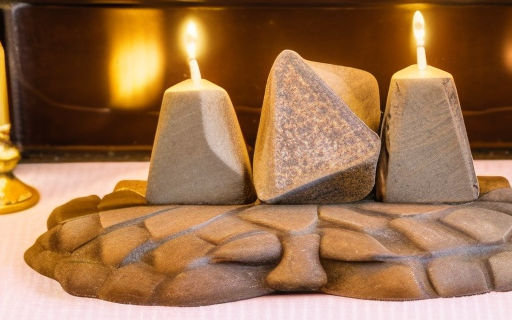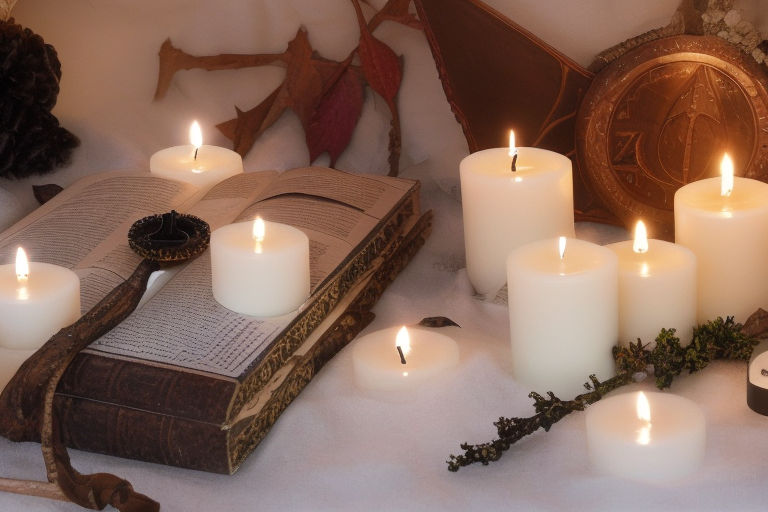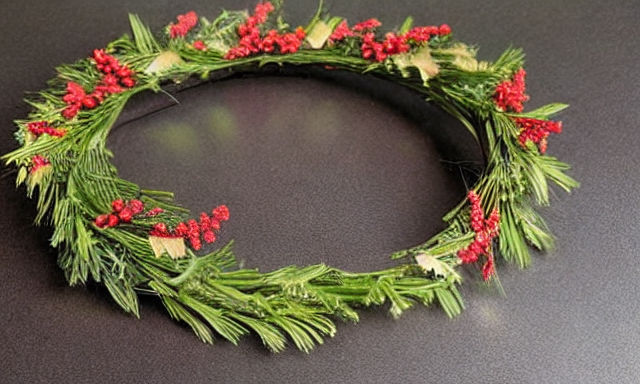Mabon Traditions
The Autumnal equinox marks the end of summer and the start of autumn, and there are many traditions to celebrate this harvest festival. If you’re not sure what to do, try one of these traditions: Bake a cake to honor the moon. If you’re not Irish, you can still celebrate Mabon in your own way.
When you make a purchase through links on our site, we may earn an affiliate commission. As an Amazon Associate I earn from qualifying purchases..

Autumnal equinox
The autumnal equinox is an important time for celebrating the harvest. Many cultures associate the equinox with harvest and make this day a time for harvesting food and preserving it for winter. The equinox also marks the first day of hunting season in some regions.
Many cultures celebrate the Autumnal equinox, or Mabon, as a time for reflection and thanksgiving. The festival originated among the Celts who lived in northern and western Europe prior to the Roman invasion. Traditionally, the celebration centered on the balance of light and dark, the masculine and feminine, and the equinox marks the start of the harvest season.
The autumn equinox is more significant for pagans, and is one of the three festivals they celebrate to honor the harvest. For the northern hemisphere, autumn begins with the September equinox, which is determined by Earth’s orbit around the sun. The equinox falls at a slightly different time each year, between 21 and 24 September.
Traditionally, the equinox coincides with the harvest, and many pagans celebrate the equinox by reflecting on the past season, planning for the future, and thanking the Old Sun God for providing a plentiful harvest. It is also a time to commemorate the earth’s fertility, and many pagans gather for rich feasts filled with seasonal foods.
Harvest festival
Autumn harvest festivals are a great time to honor the Goddess and harvest her bounty. Her beauty is especially pronounced in her elder form as the Harvest Queen. It’s also the time to welcome the harvest moon and to prepare for a long winter of rest and reflection. The Goddess will return in spring and her energy will be replenished with the new growth of the crops.
Harvest celebrations are traditionally marked with a feast and libations. Apples, corn, and other seasonal vegetables are common foods to be eaten during the holiday. Apples are also commonly associated with this festival, representing regeneration, healing, wholeness, and long life. When an apple is peeled and sliced, a pentagram appears on its surface, a symbol of Mabon.
Harvest festivals, like Mabon, have been celebrated throughout history. Traditionally, Mabon falls in the third week of September, which coincides with the fall equinox. Harvesting season in the UK usually ends at this time, while in the USA, harvest may last well into the fall. In many cultures, harvest celebrations also feature the burial of grain dolls, which represent good luck in the fields. The harvest festival is also a time for wine-making and celebrating deities associated with the vine.
Recipes
Mabon is the second harvest festival of the year. This holiday honors the harvest, especially apples and grains. It is also a great time to enjoy the art of beer tasting. There are many ways to celebrate this festival. Here are some of the traditional foods that are associated with this holiday. These foods can help you celebrate the day with a festive meal.
The Greek goddess Demeter, who ruled the autumn harvest, is linked to the festival. When she lost her daughter, the earth turned barren. This explains why she was associated with the autumn harvest. The autumn season is also a time for setting intentions for reduction. Mabon can be a time to make these intentions.
Cleaning your home is also a good way to celebrate this holiday. The fall and winter seasons will bring more time in your home, so it is important to remove clutter. Also, it is a good time to begin a gratitude journal. Writing down the things you are grateful for each day will not only brighten your day, but it will also send a signal to the universe that you are grateful for the things you have in your life.
Spiced roasted cauliflower is another great dish for the Mabon celebration. This vegetable is best prepared in the oven. It should be coated in olive oil and sprinkled with your favorite spices. Bake it for about 30 to 40 minutes.
Crafts
The Crafts of Mabon are based on the ancient Welsh and Celtic mythology. Mabon is the son of the Goddess of the Earth, Modron. He is imprisoned at Caer Loyw and freed by the Celtic hero Kilwich. In return, he is granted the hand of the Earth Mother goddess Olwen.
While the Crafts of Mabon may include anything from fruit pies to wine brewing, they have a strong connection to the autumn season. Traditionally, Mabon is a time of gratitude and preparation for the coming winter, with its longer, darker nights. As such, apples are a common symbol of the festival.
Crafts of Mabon include harvest rituals, celebrating the fall equinox, and honoring the ancestors. These ceremonies are typically conducted during September’s Harvest Moon. You can also discuss your top goals for the year and the ways you can bring them closer to fruition. Crafts of Mabon can also include creating items for your home or altar to reflect the autumnal spirit. You may also wish to make offerings to the deities.
Crafts of Mabon are an excellent way to celebrate the harvest and natural balance. This season is also a time to enjoy nature and meditate. Harvest-themed crafts can include making candles and celebratory incense. Harvest potpourri can also be made and simmered on the stovetop or in an electric warmer.
Worksheets
There are a number of worksheets that can be used to teach students about the traditions associated with Mabon. This traditional celebration takes place in the autumn and honors balance, introspection, and grace. This festival also celebrates the first fruits of harvest. Many people celebrate this holiday by celebrating with apples. While apples are a traditional symbol for this holiday, you can incorporate other types of fruits and vegetables into the worksheets.
The festival of Mabon is celebrated on the autumnal equinox. It is one of three harvest festivals in the Celtic calendar. It originated with ancient Celts who lived in Britain and Northwest Europe before the Romans arrived. They were a pagan people who celebrated the harvest and the rebirth of the Earth. In addition to eating fruits and vegetables, they also celebrated the god Mabon.
For herbalists and wildcrafters, autumn brings specific imagery to their work. The season is a great time to harvest herbs and root vegetables. You can also celebrate this holiday by preparing herbal teas.
Origins
Mabon is a harvest festival celebrated by pagans. The day marks the beginning of the harvest season and is associated with abundance. Many rituals, dishes, and decorations feature apples. The day is also celebrated by eating plenty of food. Many modern-day neo-pagans celebrate this day by building an altar to Mabon.
The name of the holiday comes from a Welsh God, Mabon. According to Welsh mythology, Mabon is the son of the Earth Mother Goddess Modron. The first celebrations of this holiday were believed to celebrate the arrival of autumn. However, the modern Pagan community did not recognize the name until the 1970s.
The autumn Equinox is celebrated by many cultures. The autumn Equinox is a time for gratitude. Harvesting is done before winter arrives, which means dark nights and longer days. Many cultures also use this day to plant spring flower bulbs. During this time, many people celebrate by eating a feast with family and friends.
The fall equinox is also associated with the Celtic festival of Mabon. This festival celebrates the autumn harvest and is the second harvest festival in the Wheel of the Year. It is traditionally celebrated the third week of September. The UK harvest usually ends during this time. However, in the United States, the harvest can last until early October, as most of the United States enjoys a long growing season. Another tradition of celebrating this festival is the burying of grain dolls. These are said to bring good fortune to farmers in the fields during the coming winter.
Symbolism
Mabon traditions include the celebration of a cornucopia, the symbol for the wealth of the harvest. The cornucopia is an phallic, hollow, and receptive symbol. The apple is also an important symbol, as it represents a healthy and long life. It is also known as the Quert, the epitome of good health.
The Celtic harvest festival of Mabon marks the end of summer and the start of the harvest. It is also a time to finish projects and clear the home to prepare for the coming winter. The cornucopia represents a bountiful harvest, and the celebrations usually include a feast with friends and family. It is also a good time to plant spring flower bulbs.
Many people have adopted the celebration of Mabon. It is a time to give thanks for what you have and reflect on the balance in your life. In the early days, people lived in rural areas and shared their harvests with others. These rural villages held festivals during which people celebrated the harvest by sharing great feasts and welcoming neighbors into their homes.
The festival of Mabon is an ancient one. It is usually celebrated in the third week of September. The fall equinox is the last day of harvest, but in other parts of the world, it is celebrated a little later. Many people also mark the arrival of spring by burying dolls made of grain. This is believed to bring fertility to the fields.

















